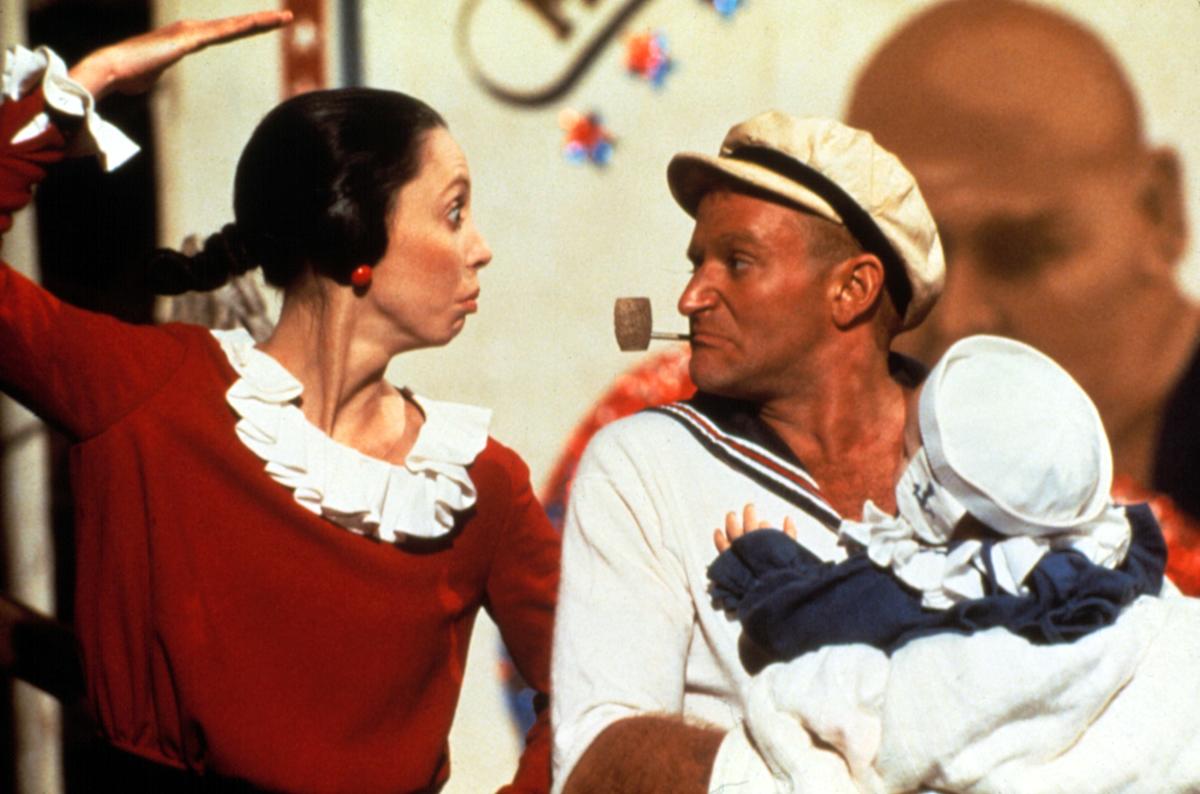
In the world of film, it’s not uncommon to hear wild stories about the behind-the-scenes activities that take place on set. Recently, Barry Diller, the former CEO of Paramount Pictures, revealed a particularly shocking anecdote during a book tour for his memoir, “Who Knew.” Diller was asked by journalist Anderson Cooper to name the most notorious film set he had ever encountered, and without hesitation, he pointed to Robert Altman’s “Popeye,” released in 1980.
Diller’s recounting of the “Popeye” film set vividly illustrates what he referred to as the most “coked-up” atmosphere in his extensive career. The 1970s and 80s were notorious for drug use in Hollywood, and “Popeye” seems to have encapsulated this era perfectly. Diller explained, “You couldn’t escape it.” He reminisced about how film cans that were meant for sending footage back to Los Angeles for processing were actually being used to smuggle cocaine back and forth to the production set in Malta.
For those who haven’t seen “Popeye,” the film starred Robin Williams in his first significant film role, paired with Shelley Duvall as Olive Oyl. Diller emphasized the chaotic nature of the production, hinting that everyone involved was “stoned” while working on set. While it grossed around $60 million worldwide—almost double its production budget—it received mixed reviews during its release.
Variety, a leading entertainment magazine, remarked that despite the challenges the film faced, it managed to avoid total disaster. They acknowledged Williams’ uncanny transformation into the beloved cartoon character but noted that his delivery often left audiences struggling to understand his lines. This feedback showcases the polarizing effect “Popeye” had, serving as both a point of fascination and a cautionary tale from the era.
The story highlights broader themes in Hollywood history, where creativity often intersected with excess. Diller’s candidness about the drug culture prevalent in the industry at that time serves as a reminder of the significant toll that substance abuse can take, not only on individuals but also on art and storytelling. The allure of fame and success often came hand in hand with harmful habits, and Diller’s recollections expose that reality behind the glamour of Hollywood.
Interestingly, the legend of “Popeye” has persisted far beyond its controversial production. It has evolved into a cultural touchstone, encapsulating a moment in time when film was not just about storytelling but also about the lifestyles of those involved in creating it. The charm of Williams as Popeye remains a key reason why the film retains a certain nostalgic value among audiences today, despite its troubled production.
In reflecting on the legacy of films like “Popeye,” one must consider how the narrative surrounding a production can add layers of richness to the viewing experience. While the film struggled to achieve complete critical success, the tale of its creation enhances its mythos, sparking curiosity and nostalgia alike. It’s fascinating how the struggles and excesses become part of the story, lending it an authenticity that viewers are drawn to.
As you delve into films from this period, consider how much of the enjoyment comes from understanding the societal context in which they were created. The stories behind the scenes, much like Diller’s recollections, provide a deeper understanding of the creative process and the individuals involved. They remind us that the road to artistic expression is often fraught with challenges that can either forge legends or lead to downfalls.
In today’s climate, where discussions about mental health, substance abuse, and the pressures of the entertainment industry are becoming more prominent, revisiting the tales from the past can provide valuable lessons. Barry Diller’s experience on the set of “Popeye” serves as a historical lens into the complexities of creativity, fame, and the human experience.
As we continue to reflect on the legacies of films like “Popeye,” it’s essential to acknowledge not only the artistic achievements but also the personal struggles faced by those involved in their creation. Understanding the interplay of these elements allows us to appreciate films at a deeper level, fostering conversations about growth, resilience, and the evolving nature of the artist’s journey. The stories of yesteryear remain pertinent today, serving as both cautionary tales and sources of inspiration for future generations of filmmakers and performers.
In conclusion, the revelations surrounding the making of “Popeye” and its tumultuous environment encapsulate more than just a film; they represent a significant chapter in Hollywood history. Diller’s anecdotes illustrate the complexities of the era, offering rich material for reflection. As we celebrate the art of filmmaking, let us also acknowledge the humanity behind the camera and strive to create an industry that prioritizes well-being alongside creative fantasies.
Source link








